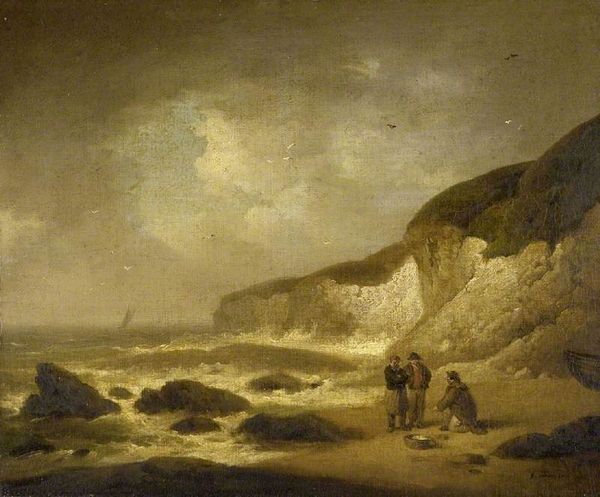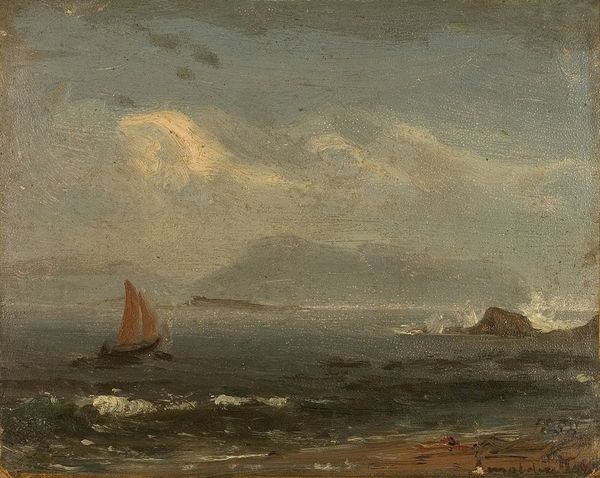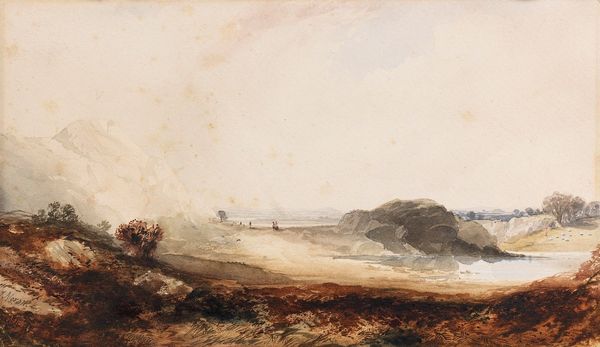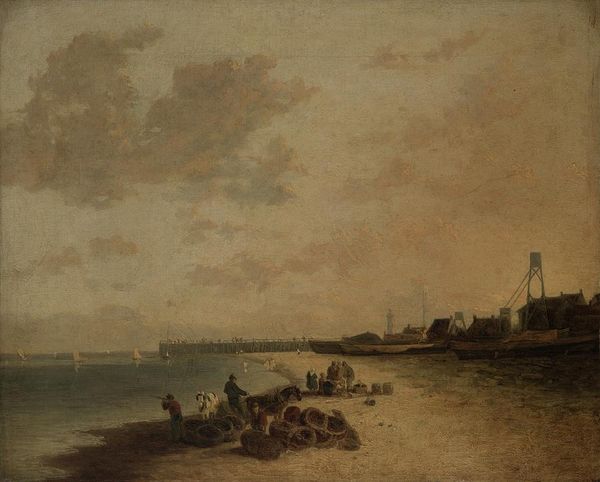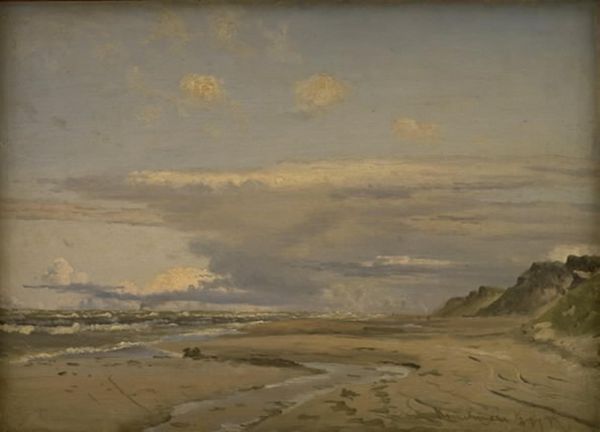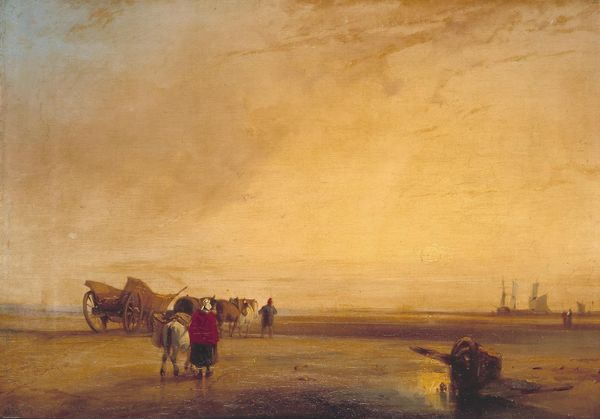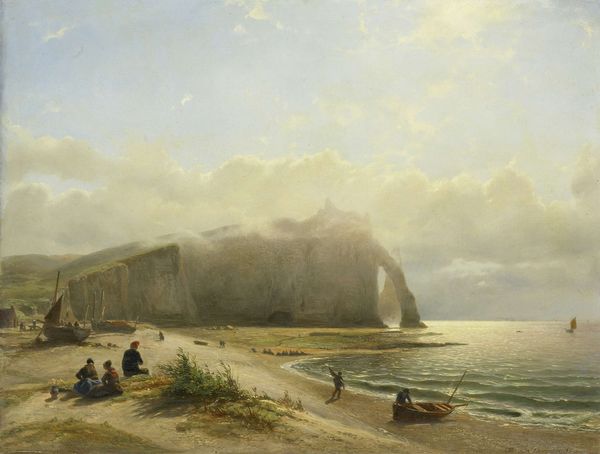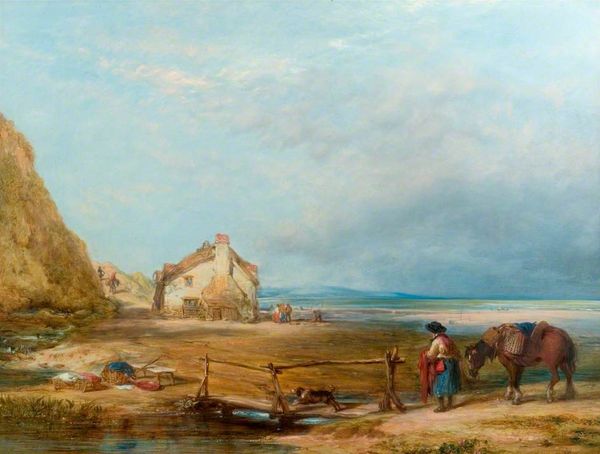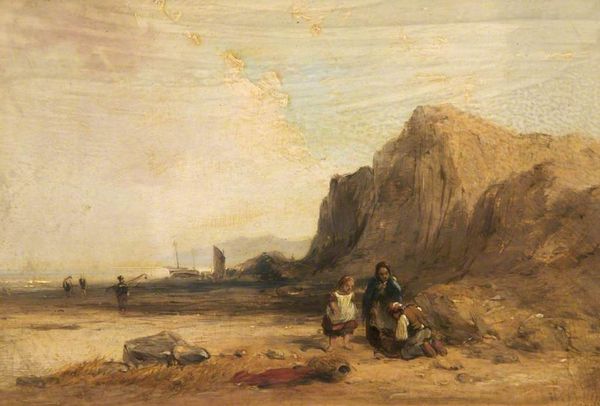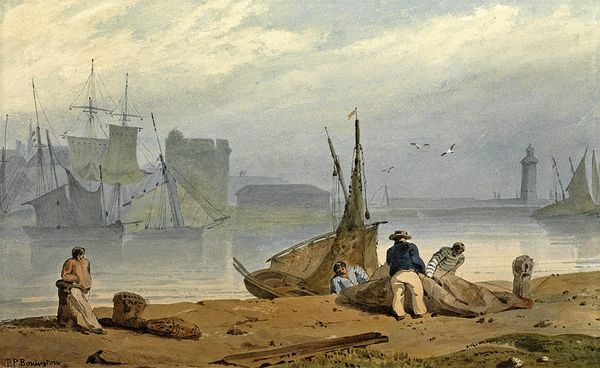
painting, oil-paint
#
painting
#
oil-paint
#
landscape
#
oil painting
#
romanticism
#
genre-painting
#
sea
Copyright: Public domain
Editor: This is "Calm off the Coast of the Isle of Wight," an oil painting by George Morland, dating back to 1804. I find the painting surprisingly tranquil. What do you see in this piece? Curator: What I see here is a romanticised view of coastal life in England, painted during a period of intense social and political upheaval. Think about it: Morland is painting this picturesque scene, but what voices are missing? Where are the signs of labour, of economic struggle, of the colonial realities that were shaping British society at the time? This calm feels deliberately constructed, a kind of escapism. Editor: So you're suggesting the "calm" is actually obscuring something? Curator: Exactly. This scene of leisure is positioned against the backdrop of empire, an empire built on exploitation and inequality. Where are the working class people here? What about the islanders of colour that colonialism was displacing, whose land was exploited for resources? The artist is not just painting a scene. It’s a choice, a very deliberate representation of reality. Does it make you question your initial perception? Editor: It does, actually. I hadn’t thought about what wasn't being shown. The tranquility now feels…almost complicit. Curator: And that tension is precisely what makes analyzing art so vital! Recognizing that these idyllic scenes often mask harsher realities helps us engage critically with both history and contemporary social issues. Editor: I'll definitely remember to look for those hidden narratives in other landscapes as well. Thanks!
Comments
No comments
Be the first to comment and join the conversation on the ultimate creative platform.
